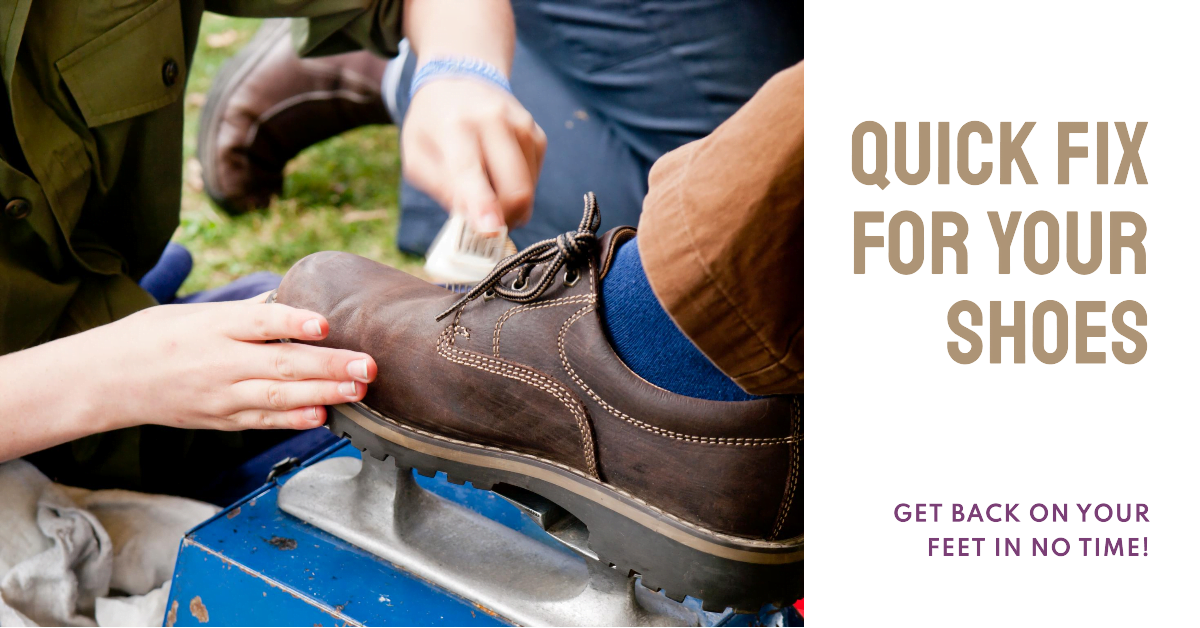How Long Does Shoe Goo Take To Dry
Are you tired of waiting ages for your shoes to dry after applying Shoe Goo? Well, wonder no more! In this article, we will dive deep into the question on everyone’s mind: how long does Shoe Goo take to dry?
Shoe Goo, a popular adhesive for repairing and protecting shoes, is known for its durability and flexibility. However, there needs to be some clarification when it comes to drying time. Some sources claim it dries in just a few hours, while others suggest it can take up to 24 hours.
To settle the debate, we conducted extensive research and consulted expert opinions to bring you the most accurate answer. We will explore various factors affecting the drying time, such as temperature, humidity, and application thickness.
Whether you’re planning to fix a pair of sneakers or reinforce the soles of your favorite boots, understanding how long Shoe Goo takes to dry is crucial for a successful repair job. So, if you’re ready to find out the truth and return to walking in your repaired shoes, sit back, relax, and enjoy this informative article.
What is Shoe Goo?
Shoe Goo is a versatile adhesive designed explicitly for shoe repair and protection. It is a thick, clear, and rubbery substance that can bond, seal, and rebuild various shoe materials, including leather, rubber, fabric, and vinyl. It provides:
- Excellent adhesion and flexibility.
- Making for fixing worn-out soles and sealing.
- Sealings, and prev.
They are preventing damage.
- The unique
Formulation of Shoe Goo allows it to withstand extreme conditions and resist water, chemicals, and abrasions. It dries to a tough and durable finish, ensuring long-lasting repairs. Whether you need to mend a small tear, reinforce a weak spot, or add an extra layer of protection, Shoe Goo is a reliable solution for all your shoe repair needs.
Understanding the drying process

The drying process of Shoe Goo involves the evaporation of solvents present in the adhesive. When applied, Shoe Goo initially has a thick and tacky consistency. As the solvents evaporate, the adhesive becomes progressively more complex and rigid until it reaches its fully cured state.
Various factors influence the drying process, including temperature, humidity, and application thickness. Higher temperatures and lower humidity levels promote faster drying, while cooler temperatures and higher humidity can extend the drying time. Additionally, thicker applications of Shoe Goo will take longer to dry compared to thinner layers.
Factors that affect drying time

1. Temperature: The temperature of the environment plays a significant role in the drying time of Shoe Goo. Higher temperatures accelerate the evaporation of solvents, resulting in faster drying. On the other hand, colder temperatures slow down the evaporation process, prolonging the drying time. It is recommended to apply Shoe Goo in a temperature range of 60°F to 80°F (15°C to 27°C) for optimal drying.
2. Humidity: Humidity levels can affect the drying time of Shoe Goo. Low humidity facilitates faster evaporation, while high humidity slows it down. If you live in a humid climate, consider using a dehumidifier or placing the repaired shoes in a well-ventilated area to speed up the drying process.
3. Application thickness: The thickness of the Shoe Goo layer applied also affects the drying time. Thicker layers take longer to dry compared to thin layers. If you’re in a hurry, applying multiple thin layers instead of a single thick layer is recommended to expedite the drying process.
4. Ventilation: Proper ventilation is essential for the drying process. Good airflow helps carry away the evaporated solvents and speeds up drying. Ensure the repaired shoes are placed in a well-ventilated area, preferably near a fan or an open window.
5. Material type: Different shoe materials may have varying drying times due to their porosity and absorbency. Non-porous materials like rubber and vinyl dry faster than porous materials like fabric and leather. Keep this in mind when repairing shoes made from different materials.
Recommended drying time for different applications
The drying time of Shoe Goo can vary depending on the specific application and the factors mentioned above. However, as a general guideline, here are the recommended drying times for typical shoe repair applications:
1. Sole repair: When repairing the soles of your shoes, it is recommended to allow Shoe Goo to dry for at least 24 to 48 hours. This extended drying time ensures that the adhesive fully cures and provides maximum durability and flexibility.
2. Seam sealing: If you’re sealing shoe seams to prevent water penetration, allow Shoe Goo to dry for approximately 12 to 24 hours. This drying time ensures a strong and waterproof bond.
3. Small repairs: For small repairs, such as fixing minor tears or reinforcing weak spots, Shoe Goo typically dries within 8 to 12 hours. However, checking the adhesive’s consistency is always a good idea before considering the repair complete.
Remember that these drying times are approximate and can vary based on the factors above. It is always best to refer to the specific instructions provided by the Shoe Goo manufacturer for the most accurate drying time.
How to Use Shoe Goo Properly

Black Shoe Goo Repair Adhesive for Fixing Worn Shoes
Introducing the Sof Sole Shoe Goo Repair Adhesive – your ultimate solution for worn shoes or boots. This 3.7-ounce tube is your go-to for fixing leather, vinyl, rubber, or canvas footwear. Stronger than regular glue, it repairs, protects, and rebuilds with a lasting bond. Its waterproof sealant patches small holes and remains secure even when wet. Extend the life of your gear, enhance traction – all with this powerful adhesive. Your shoes deserve the best – click to repair now!
Key Feature
Tips for speeding up the drying process
If you’re in a hurry and need your repaired shoes to dry faster, here are some tips to speed up the drying process:
1. Increase temperature: Place the repaired shoes in a warm environment to accelerate drying. You can use a hairdryer set to low heat or a heater to warm the area gently. Just be cautious not to expose the shoes to excessive heat, as it may damage certain materials.
2. Use a dehumidifier: If you’re in a humid climate, running a dehumidifier in the room where the shoes are drying can help remove excess moisture from the air, allowing Shoe Goo to dry faster.
3. Apply thin layers: As mentioned earlier, applying multiple thin layers of Shoe Goo instead of a single thick layer can expedite drying. Each thin layer will dry faster compared to a thick layer.
4. Increase airflow: Ensure the repaired shoes are placed in a well-ventilated area with good airflow. You can use a fan or open windows to promote air circulation, which will help evaporate the solvents faster.
Common mistakes to avoid when using Shoe Goo
While Shoe Goo is a reliable adhesive, there are some common mistakes that you should avoid to ensure optimal results and drying time:
1. Applying too thick of a layer: Applying Shoe Goo in a thick layer increases the drying time and can lead to uneven drying and reduced adhesion. It is always best to apply thin layers, allowing each layer to dry completely before applying the next.
2. Insufficient drying time: Rushing the drying process and not allowing Shoe Goo to cure fully can result in weakened bonds and premature failure. Follow the recommended drying times for your specific application to ensure maximum strength and durability.
3. Ignoring temperature and humidity: Neglecting the influence of temperature and humidity can significantly impact Shoe Goo’s drying time and overall performance. Always consider these factors and create an optimal environment for drying.
4. Improper surface preparation: Before applying Shoe Goo, ensure the shoe surface is clean, dry, and free from contaminants like dust, dirt, or oil. Proper surface preparation ensures better adhesion and faster drying.
By avoiding these common mistakes, you can ensure that your Shoe Goo repairs dry efficiently and provide long-lasting results.
Alternative products for quick drying
If you’re looking for alternative products that offer quicker drying times, there are a few options available:
1. Shoe repair adhesives with quick-drying formulas: Some manufacturers offer shoe repair adhesives formulated explicitly for faster drying. These adhesives are designed to dry within a few hours, allowing you to return to wearing your repaired shoes sooner.
2. Instant adhesives: Instant adhesives, also known as cyanoacrylate adhesives or superglues, are another option for quick repairs. These adhesives bond rapidly, usually within minutes, and provide strong adhesion. However, they may offer a different level of flexibility and durability than Shoe Goo.
It’s important to note that alternative products may have different properties and limitations than Shoe Goo. Always read the instructions and consider the specific requirements of your shoe repair project before opting for an alternative adhesive.
How to test if Shoe Goo is fully dry
You can perform a simple test to ensure your Shoe Goo repairs are fully dry. Gently touch the repaired area with your finger. It is likely fully cured if the adhesive feels dry and leaves no residue on your finger. However, it needs more time to dry if it feels tacky or leaves a sticky residue.
Another test is to press your fingernail into the adhesive. If it leaves an indentation, the adhesive is not fully dry. A fully cured Shoe Goo repair should be challenging and resistant to pressure.
Remember to test in an inconspicuous area first to avoid visible damage to your shoes.
If You Want To purchase Shoes, Click on Button
FAQs
Can I speed up the drying time of Shoe Goo by using a hairdryer on high heat?
Using a hairdryer on high heat can damage certain shoe materials and may not significantly speed up drying. Using a hair dryer on low heat is best, or opt for other methods to avoid any potential harm to your shoes.
Can I wear my repaired shoes before thoroughly drying Shoe Goo?
Wearing repaired shoes before the Shoe Goo is fully dry is not recommended. Premature use can result in weakened bonds and may cause the adhesive to peel off, reducing the effectiveness of the repair.
Can I apply multiple layers of Shoe Goo without waiting for each layer to dry?
It is essential to allow each layer of Shoe Goo to dry completely before applying the next layer. Applying layers on top of wet or partially dried adhesive can lead to poor adhesion and extended drying times.
Can I use a fan to speed up the drying process of Shoe Goo?
Yes, using a fan to increase airflow around the repaired shoes can help speed up drying. Ensure the fan is set to a moderate speed and directed towards the shoes for optimal results.
Conclusion and final thoughts
In conclusion, the drying time of Shoe Goo can vary based on several factors, such as temperature, humidity, and application thickness. Higher temperatures and lower humidity levels generally promote faster drying, while thicker layers take longer to dry than thin layers.
Following the recommended drying times for different applications is crucial to ensure optimal results. Rushing the drying process or neglecting temperature and humidity considerations can weaken bonds and compromise repairs.
While Shoe Goo offers excellent durability and flexibility for shoe repairs, alternative products with quick-drying formulas or instant adhesives may be suitable for those who require faster results. However, it’s essential to consider the specific requirements of your shoe repair project before using alternative adhesives.
By understanding the drying process and considering the factors that affect drying time, you can successfully repair and protect your shoes using Shoe Goo. So, next time you reach for Shoe Goo, you’ll have the confidence and knowledge to achieve the best results with optimal drying time.

TIOSEBON Women’s Walking Sock Shoes
Experience unmatched comfort and style with TIOSEBON Women’s Athletic Walking Shoes. These slip-on casual mesh sneakers blend fashion and functionality, making them ideal for everyday activities and workout sessions. The MD sole ensures a lightweight feel without compromising on durability and elasticity.
Key Feature







